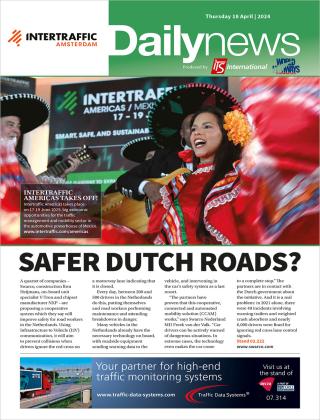
EU Member States have to ensure that road markings and road signs are properly designed and maintained in such a way that they can be easily and reliably recognised by both human drivers and vehicles equipped with driver assistance systems or higher levels of automation.
One recommendation elaborated by the ERF is the ‘150 x 150 formula’. It was created taking into account only the human eye, with the goal to improve road safety. Interestingly, several studies proved that what is good for the human eye to support safe and comfortable driving also works very well for machine vision. The ‘150 x 150 formula’ recommends a line width of 150 mm and a retroreflectivity (RL) > 150 mcd/m²/lx under dry conditions - RL > 35 mcd/m²/lx under wet conditions).
“We do need better performing lane markings on the road networks,” says Mosböck. “Once we have achieved a level which is most suited for the human eye, then it will work for automated vehicles as well.”
Stand 02.236














